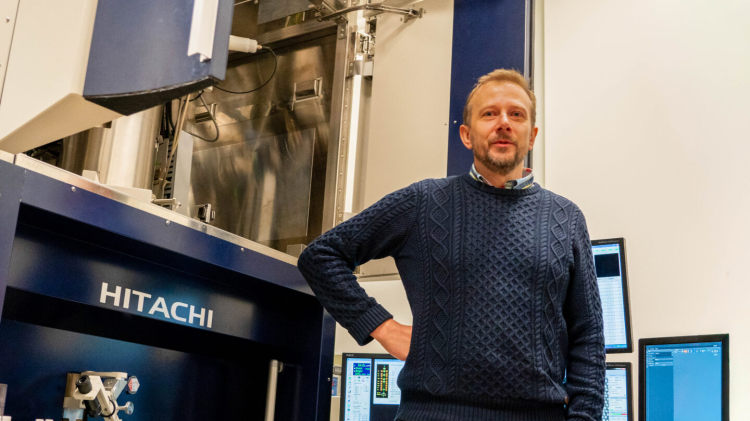A team of researchers at the University of Victoria (UVic) have achieved a major breakthrough in electron microscopy that will allow scientists to visualize atomic-scale structures with unprecedented clarity using lower-cost and lower-energy microscopes than ever before.

Arthur Blackburn, co-director of UVic's Advanced Microscopy Facility and Hitachi High-Tech Canada Research Chair in Advanced Electron Microscopy
Led by Arthur Blackburn, co-director of UVic's Advanced Microscopy Facility, the team developed a novel imaging technique that allowed them to achieve sub-Ångström resolution (less than one ten-billionth of a meter) using a compact, low-energy scanning electron microscope (SEM) a feat previously possible only with a large, high-cost transmission electron microscope (TEM).
This work shows that high-resolution imaging doesn't have to rely on expensive, complex equipment. We've demonstrated that a relatively simple SEM, when paired with advanced computational techniques, can achieve a resolution that rivals or even surpasses traditional methods."
Arthur Blackburn, co-director of UVic's Advanced Microscopy Facility and Hitachi High-Tech Canada Research Chair in Advanced Electron Microscopy
The research, published in Nature Communications , opens the door to more accessible microscopy for labs around the world. The new technique allows for high-resolution, atomic-scale images without the previously prohibitive cost, space and personnel requirements.
The breakthrough was made possible by applying a technique called ptychography, which uses overlapping patterns of scattered electrons to build a highly detailed picture of a sample. Using this technique, the team was able to reach a resolution of just 0.67 Ångström less than the size of an atom, and 1/10,000 the width of a human hair using a low-energy beam on a SEM. Previously, achieving sub-Ångström resolution required a high-energy beam and a TEM.
"This could be transformative for fields like materials science, nanotechnology and structural biology," says Blackburn. "The advance will most immediately benefit the research and production of 2D materials, which are promising in the development of next-generation electronics. Long term, it could also assist in determining the structure of small proteins, leading to advances in health and disease research."
This work was conducted in partnership with Hitachi High-Tech Canada and supported by the Natural Sciences and Engineering Research Council of Canada (NSERC).









